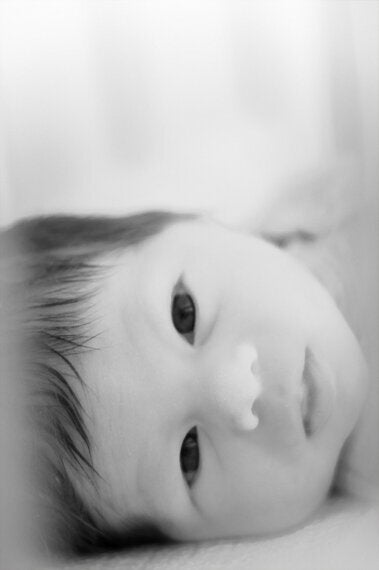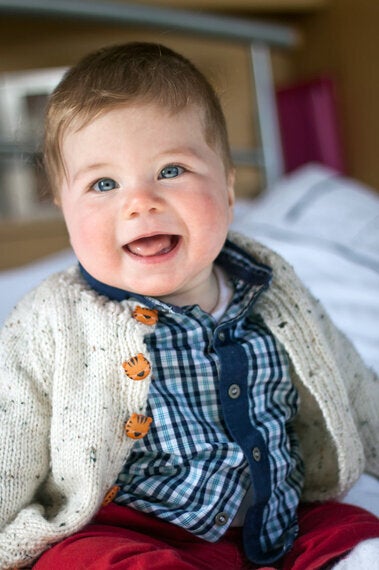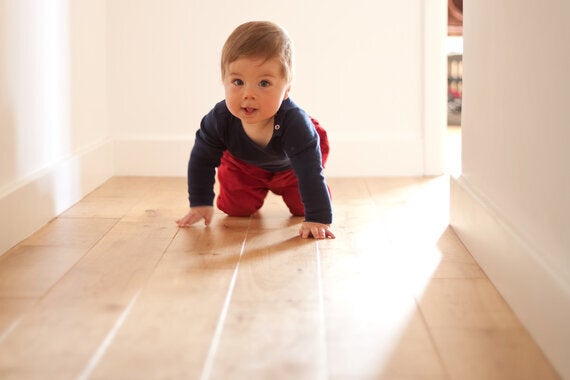As well as being a stay-at-home dad and sometime policy wonk, I'm also a photographer, so obviously when baby came along, the first thing I started doing was taking lots of photos of him. Most of these are just silly snaps that end up on my blog (you can see the selfies we take every day at www.280days.co.uk), but I wanted to have some proper photos we could print out. Knowing how expensive professional baby photographers are, I decided to have a go myself.
The first thing I realised was that you don't need a whole load of fancy equipment to capture good shots - a DSLR is good, but the tips below apply equally well to shooting with a compact digital camera or even a phone with a good camera. The sheer range of apps available to edit images now means that anyone can produce good results for very little outlay - even good enough to print out and frame.
Taking photos of a baby isn't really like any other subject, but in the past few months I've picked up a few tips to help get great professional-looking results at home.
1 - focus on the details
These tips are sort of in chronological order from birth - and when babies are tiny it's very hard to capture their fragility, beauty and sheer newness to the world. One way you can do that is by getting in close to the detail. Tiny feet, fingers, features all look beautiful when photographed simply and cleanly. Another great way to do this is by using contrasts to show the size - as soon as their fingers can grip, a photo of baby holding mum or dad's finger is a lovely memory.

Image credit: bloggers own.
2 - black and white shots look great
When babies are very new, their skin tends to be a bit blotchy, scratched and maybe even bruised, so colour shots might not come out looking as good as you would hope. One easy way around this is to either take photos in black and white if your camera has a mode to do that, or to us an all like Snapseed to desaturate the image. You can get some fantastic images with lots of contrast, and milky smooth skin that really properly captures how babies' skin feels, even when it's not looking it's best.

Image credit: bloggers own.
3 - one to six months is the hardest period: time to get family and friends involved.
When your baby becomes a bit more wriggly, but not yet able to support themselves, it's time to enlist family and friends and go for portraits with them cuddling. You can still crop in nice and close for details and contrasts like the shot below, it just means that baby has a natural, comfortable support and you can capture memories of them meeting the whole network of people around them. Plus, these photos will make great gifts for future Christmas and birthdays for whoever was holding the baby!

Image credit: bloggers own.
4 - once they can sit up and move, it's time to experiment.
As soon as you can safely leave you baby sitting up, perhaps with a cushion or two, or a nice thick rug behind them, you have much freer reign to really start taking photos that capture them as you see them - engaging with you, interacting with their toys, playing with others... Now's the time to experiment and see what poses they prefer, which toys work best in photos, and how you can best capture their attention. Try and schedule your photo sessions for when they've recently woken from a nap and been changed, so they aren't sleepy and feel comfortable. It was around this time I discovered that hanging one of my son's Lamaze toys from my camera grabbed his attention and made him smile at the camera much more.

Image credit: bloggers own.
5 - don't take too many!
You've got a months-old baby, you've got loads to do, you might be working as well, or needing to try and stay on top of home chores, the absolute last thing you're going to have time or inclination to do any time soon is scan through thousands of very similar images trying to work out which is 'best'. Famous landscape photographer Ansel Adams once said that if he took 12 significant photos in a year it's a good crop. You probably don't only want one good photo a month, but trying to stick to hitting the shutter only when you are sure, and immediately deleting bad shots will avoid the time and effort of trying to do it later.

Image credit: bloggers own.
You can follow my adventures as a stay-at-home dad at www.280days.co.uk and see my other photography at www.nicstevenson.com